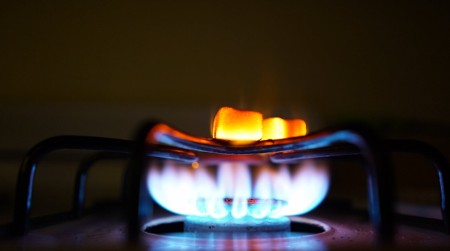June 10, 2020 – Welcome back Uma Campbell who is a repeat guest blogger here at 21st Century Tech Blog. Uma lives in Southern California and can be reached on Twitter at @umajcampbell. Her topic today focuses on creating a zero-carbon home. Why is this an important consideration for existing and future homeowners? Because each of us can contribute to the overall reduction of our global carbon footprint to help reduce atmospheric warming. If we leave it to industry and government alone we may exceed the 2.0 Celsius rise in global temperatures by the end of the century with significant consequences for our children and life on the planet. As always, your comments and questions are welcomed.
As countries around the world take the necessary steps to transition to greener living, individual homeowners are following suit by doing their part. Some are committing to personally tackling their carbon footprints and doing this by attempting to create a zero-carbon home.
What is a zero-carbon home? It is one that generates its own energy from renewable sources sufficient to sustain the dwelling’s energy demands. Zero-carbon homes not only help the environment and lessen the household’s carbon footprint, but zero-carbon homeowners also reduce their costs through energy savings. Although making a home zero-carbon sounds daunting, there are some simple changes and projects that can be done to achieve the goal, and now when we are confined to our homes it is a perfect time to implement a plan to get to a zero-carbon goal.
Look at Alternative Fuels
The source of heating your home is something you inherit by default. The fuel being used may be the single largest contributor your home makes to greenhouse gas emissions.
As a homeowner, you can make a conscious decision to find a more eco-friendly choice. You may not realize it but using propane as an alternative fuel can be a good replacement option to electric heating particularly if the source is a coal-fired powerplant.
Propane is flexible. It can be used for backup generators, fireplaces, grills, stoves, water heaters, refrigerators, and more. Tankless propane water heaters can reduce a household’s energy bill while producing 67% less pollution than traditional electric water heaters. And today many appliances are hybrids that can adapt to use two types of fuel which means you have more eco-friendly options.
Look at Solar Energy
As green technologies go, solar gets the most notice from homeowners seeking a net-zero carbon solution. Roof-mounted solar panels say something to your neighbours – that you are eco-conscious and part of the climate change solution and not the problem. But rooftop panels aren’t the only way to add solar energy to your home.
When you choose solar panels they typically are mounted on roofs. To make a significant dent in reliance on electricity from the grid, most homes need more than one panel. To learn how to best use your roof footprint to maximize generating solar energy consult the growing number of professional installers who right now would be happy to get working on your roof to give you a solar home. It is easy to practice social distancing when almost the entire installation doesn’t require anyone to come inside. Another way to deploy solar without using the roof is to deploy portable solar generators designed to power a variety of devices from small electronics to that extra refrigerator you may have in the garage. There is no need to draw power from the grid if you can get it directly from the sun.
Look at Greener Light Bulbs
The current President of the United States has rolled back regulations so that people can continue to buy incandescent light bulbs which have been with us since Edison first brought the technology to market more than a century ago. But incandescent lights are energy inefficient and have shorter lifespans than several alternatives. In every category of lighting requirement, there are better choices for consumers. Just compare:
- An average incandescent bulb uses 60 watts of electricity, costs roughly one dollar, and lasts for approximately 1,200 hours.
- A compact-fluorescent lightbulb (CFL) uses 14 watts of electricity, costs two dollars per bulb, and lasts approximately 8,000 hours. That 6.6 times longer, and using less than one-quarter of the energy with an initial investment that is twice that of the incandescent bulb. But you would have to buy more than 6 of the latter to equal the durability of the CFL and pay more than 4 times the amount for the electricity to deliver the same amount of light.
- A light-emitting diode (LED) bulb provides even greater savings using a mere 7 watts of electricity while costing four dollars. The LED lasts approximately 25,000 hours. That’s 7 watts consumed versus 60 for the incandescent, or less than 12% of the energy requirement, and more than 20 times the durability per bulb at a 400% higher initial cost. You would spend $20, however, on incandescent bulb replacements before you would need to replace the LED, while saving significantly on electricity used.
The biggest challenge for all lighting choices is dealing with disposal. A handy reference site describes how best to recycle old lighting.
Look at Insulation and Smart Thermostats
Houses waste energy whether it is escaping heat in the winter or cold in the summer. Homeowners can get a handle on just how much by getting an energy audit done. But before you call in an expert there are simple things you can do to use less energy that may come from carbon-intensive sources. Here are just a few:
- Limit the amount of time you use your heating or air conditioning.
- Invest in a smart thermostat to learn to manage your internal home environment optimally.
- Insulate your home to keep the warm air in on cold days, and the cold air in on hot days. Don’t forget to insulate your roof and upgrade windows to make them energy efficient.
- Planting trees near the house can be an effective climate moderator not only for what’s outside but also the inside of your home.
There has never been a better time to look at your home than right now when so many of us are in isolation. Greening it with a goal to get to zero-carbon can start now by making some of the changes described above. In the end you will contribute to lowering our collective carbon footprint and keep our atmosphere from catastrophic warming.

















